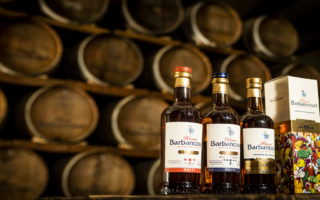Women winemakers
Winemaking in France was once a male preserve, but femmes vigneronnes are increasingly making their mark
Only a few years ago, I bumped into a group of Belgian journalists on a French press trip with a difference: they were scheduled to meet only femmes vigneronnes (female winemakers). Their goal was to highlight the emergence of a minority group in the industry and – if possible – to identify a distinctively ‘feminine touch’ in their wines.
The world has, of course, moved on since a glass of rosé was not considered a fit drink for a rugby player. Still, I was impressed when I learned that many oenology courses in France now boast equal numbers of young men and women.
I travelled south to meet one of the new generation of femmes vigneronnes, at Château de Beaupré in the Côteaux d’Aix-en-Provence appellation. This grand 18th-century château, first planted with vines in 1890 by Baron Émile Double, is the kind of property that encourages preconceptions. Am I smartly enough dressed? How should I address the lord or lady of the manor? I relaxed as winemaker Phanette Double appeared at the door of the winery – a stone-built outhouse once used as a sheep barn, she explained.
The great-granddaughter of the baron, Phanette began her career as a hydraulic engineer, specialising in flood protection and the environment. Her interest in viticulture was reawakened through the study of water stress on plants, which eventually led her back to the ancestral home in the village of Saint-Cannat, 12 kilometres north-west of Aix-en-Provence.
I followed Phanette to a dusty camionette and strapped myself into the passenger seat for a tour of the estate’s 42 hectares of vines, planted within its beautiful 100-hectare forested park. I always look forward to these white-knuckle rides, in which the admiration of vinescapes is matched by astonishment at the off-road capabilities of a small van. I stowed my pen and listened to Phanette talk about organic viticulture.
“My father never used artificial fertilisers in our vineyards,” she told me, “but 2013 is our first vintage to be certified as organic. When my father [Christian] took over the vineyards from his father, he was in charge of winemaking while my mother took care of the business. Now the roles are reversed; I tend the vines and my brother Maxime runs the commercial side.”
Château de Beaupré makes fine white wines from rolle (or vermentino), semillon, sauvignon blanc and grenache blanc, but like most estates in the appellation, production is dominated by red and rosé, from the syrah, cabernet sauvignon, grenache, cinsault and carignan grapes. During her studies of oenology, Phanette spent eight months working at Château Margaux in Bordeaux and she remains fascinated by the cabernet sauvignon grape. “There are many who would like to see less cabernet in the Côteaux d’Aix,” Phanette said. “But there is fascinating work under way to expose cabernet sauvignon vines to different situations and terroirs here, to see how and where they perform best.”
As we made our way back to the winery, Phanette’s casual demeanour belied a meticulous attention to detail: she had an eye on everything from the ripeness of grapes in the vineyard to fermentation temperatures and the next delivery of ‘dry goods’ in the cellar. Before we began tasting, Phanette explained the estate’s two contrasting methods of making whites and rosés: “Most grapes are pressed directly following the harvest, then the juice is fermented in stainless steel tanks. But our ‘Collection du Château’ white – and a proportion of the rosé – is fermented in oak barrels, which gives fuller-bodied, more complex wines.”
Surprise ending
In the Burgundian fashion, we began by tasting the reds: the soft, fruity Cuvée du Château, in which the spicy syrah married beautifully with ripe cabernet fruit; then the more intense, oak-aged Collection du Château, with its leathery dark fruit flavours. We compared the grassy, citrus notes of the Cuvée du Château white with its big brother, Blanc Collection, which showed a mouth-watering array of apricot and mineral aromas and a rich palate – the result of barrel fermentation.
It seemed unorthodox to conclude our tasting with a pink wine, but the Collection Rosé was a surprise. On the nose, it revealed a complex marriage of spice and creamy red fruits, while the palate was fat and well-structured, with concentrated, savoury flavours; a great food partner which, unusually for a rosé, promised to age for a few years. I cast my mind back to the Belgian scribes and wondered how they might have reconciled the ‘feminine touch’ of a female winemaker with a rosé that was – in trade speak – such a ‘masculine wine’.
Château de Beaupré Route Nationale 7, 13760
Saint-Cannat, tel: (Fr) 4 42 57 33 59, www.beaupre.fr
Choice wine: Collection du Château Rosé, Coteaux d’Aix-en-Provence 2012
Taste: Spicy red fruit aromas with intense, full flavours
Best drunk with: Grilled fish or poultry
Price at the estate: €12.50
Share to: Facebook Twitter LinkedIn Email


